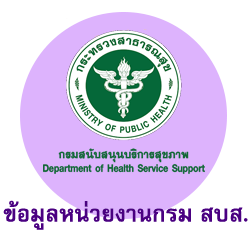การขับเคลื่อนหมู่บ้านสุขภาวะตามแนวคิดเศรษฐกิจพอเพียง บ้านอู่แก้ว หมู่ที่ 9 ตำบลเขาพระบาท อำเภอเชียรใหญ่ จังหวัดนครศรีธรรมราช
คำสำคัญ:
สุขภาวะ, เศรษฐกิจพอเพียง, บ้านอู่แก้วบทคัดย่อ
การวิจัยเชิงปฏิบัติการแบบมีส่วนร่วม เพื่อขับเคลื่อนหมู่บ้านสุขภาวะตามแนวคิดเศรษฐกิจพอเพียง ศึกษาในพื้นที่บ้านอู่แก้ว หมู่ที่ 9 ตำบลเขาพระบาท อำเภอเชียรใหญ่ จังหวัดนครศรีธรรมราช กลุ่มตัวอย่างเป็นแกนนำของสมาชิกกลุ่มต่างๆ จำนวน 10 กลุ่ม สุ่มเลือกแบบเฉพาะเจาะจง จำนวน 60 คน ดำเนินการตั้งแต่เดือนตุลาคม 2558 ถึงเดือนมีนาคม 2560 มี 3 ระยะ ดังนี้ 1) ศึกษาสถานการณ์ 2) ขับเคลื่อนการพัฒนาหมู่บ้าน 3) ประเมินผล เก็บรวบรวมข้อมูลด้วยวิธีเชิงปริมาณและเชิงคุณภาพ ได้แก่ การสำรวจ สัมภาษณ์ สนทนากลุ่ม เครื่องมือที่ใช้เก็บรวบรวมข้อมูล ประกอบด้วย การมีส่วนร่วมของชุมชน ความคิดเห็นเกี่ยวกับสุขภาวะ และการดำเนินงานด้านเศรษฐกิจพอเพียง มีค่าความเที่ยงเท่ากับ 0.76, 0.78 และ 0.80 วิเคราะห์ข้อมูลใช้สถิติร้อยละ ค่าเฉลี่ย และ dependent paired t – test
ผลการศึกษา พบว่า 1) จากการศึกษสถานการณ์ ปัจจัยที่เป็นอุปสรรคต่อการพัฒนาคือ ความพร้อมของบุคคลที่ทำงานร่วมกัน การเคารพศักดิ์ศรีความเป็นมนุษย์และความสามารถของผู้นำกลุ่ม ปัจจัยเสริมที่ทำให้กลุ่มมีการขับเคลื่อนคือการได้รับโอกาสในการพัฒนาความยืดหยุ่นในการปฏิบัติ การเจรจาต่อรองภายในกลุ่มและ ความสัมพันธ์เครือญาติ โอกาสที่ทำให้พัฒนาร่วมกันคือความศรัทธาต่อคำสอนของพ่อหลวง ความรู้สึกเป็นเจ้าของชุมชนและอยากเห็นชุมชนเปลี่ยนแปลงในทิศทางที่ดีขึ้น 2) ขับเคลื่อนการพัฒนาหมู่บ้าน โดยการนำแนวคิดด้านเศรษฐกิจพอเพียง เปรียบเทียบก่อนและหลังการวิจัยแตกต่างกันอย่างมีนัยสำคัญทางสถิติ (P<0.05) เปรียบเทียบผลการพัฒนาสุขภาวะพอเพียงทั้ง 4 ด้าน คือ ด้านร่างกาย จิตใจ สังคมและจิตวิญญาณ ก่อนและหลังการวิจัยแตกต่างกันอย่างมีนัยสำคัญทางสถิติ (P<0.05) 3) ประเมินผล การนำแนวคิดเศรษฐกิจพอเพียงมาใช้ในการพัฒนาหมู่บ้าน สุขภาวะ คนในชุมชนมีความพึงพอใจในระดับ “มากที่สุด” มีความเหมาะสมและสอดคล้องกับวิถีชีวิตของคนในชุมชนระดับ “มาก” ประชาชนเกิดความภาคภูมิใจต่อการมีส่วนร่วมพัฒนาหมู่บ้านสุขภาวะ
การพัฒนาทำให้เกิดรูปแบบ “วิถีพอเพียงบ้านอู่แก้ว” มีกระบวนการพัฒนา 11 ขั้นตอนคือ 1) การมีส่วนร่วมแบบสมัครใจ 2) ตั้งเป้าหมายต้องมาจากแรงศรัทธา 3) รับรู้ร่วมกันและคืนข้อมูลชุมชน 4) เสริมพลังให้คิดอย่างต่อเนื่อง 5) ทำตามความสามารถและใช้ทุนทางสังคม 6) ติดตามแบบเพื่อน 7) แลกเปลี่ยนเรียนรู้สม่ำเสมอ 8) ทำให้เห็นเป็นแบบอย่าง 9) สร้างพลัง เติมกำลังใจดุจญาติมิตร 10) จิตอาสา 11) สร้างทางเลือกการพัฒนา สรุปได้ว่าการนำแนวคิดเศรษฐกิจพอเพียงมาใช้ในการขับเคลื่อนหมู่บ้านสุขภาวะทำให้ประชาชนมีส่วนร่วมแบบสมัครใจ เพราะเกิดความศรัทธาต่อแนวคิด มีเป้าหมายร่วมกัน เปลี่ยนทัศนคติเป็นบวก เสริมพลังและใช้ทุนที่มีอยู่ให้เกิดประโยชน์สูงสุด ส่งผลให้กลุ่มแกนนำเปลี่ยนแปลงทั้งความรู้ วิธีการปฏิบัตินำไปสู่ทิศทางที่เป็นบวกในระดับสูง
เอกสารอ้างอิง
สถาบันวิจัยประชากรและสังคม มหาวิทยาลัยมหิดล. (2558). รายงานสุขภาพคนไทย. สืบค้นเมื่อ 8 ธันวาคม 2558 จาก http://www.thaihealthreport.com/index2558-3
สำนักนโยบายและยุทธศาสตร์ กระทรวงสาธารณสุข. (2554). แผนยุทธศาสตร์สุขภาพดีวิถีชีวิตไทย พ.ศ. 2554-2563. กรุงเทพฯ : โรงพิมพ์สำนักพุทธศาสนาแห่งชาติ.
สำนักงานสถิติแห่งชาติ กระทรวงเทคโนโลยีสารสนเทศและการสื่อสาร. (2558). การสำรวจภาวะเศรษฐกิจและสังคมของครัวเรือน. สืบค้นเมื่อ 8 ธันวาคม 2558 จากhttp://service.nso.go.th/nso/web/statseries/statseries11.html
กองสนับสนุนสุขภาพภาคประชาชน. (2555). แนวทางการดำเนินงานสุขภาพภาคประชาชน ปีงบประมาณ พ.ศ. 2556. นนทบุรี กระทรวงสาธารณสุข กรมสนับสนุนบริการสุขภาพ.
กรมการพัฒนาชุมชน. (2549). เศรษฐกิจพอเพียงในชุมชน เพื่อยกระดับรายได้ครัวเรือน. พิมพ์ครั้งที่ 1. สำนักส่งเสริมวิสาหกิจชุมชน : กรมพัฒนาชุมชน กระทรวงมหาดไทย.
โรงพยาบาลเชียรใหญ่. (2558). สรุปผลการปฏิบัติงานด้านสาธารณสุขประจำปี 2557 อำเภอเชียรใหญ่. นครศรีธรรมราช : ม.ป.พ.
โรงพยาบาลส่งเสริมสุขภาพตำบลเขาพระบาท. (2558) สรุปผลการปฏิบัติงานด้านสาธารณสุข ประจำปี 2557. ตำบลเขาพระบาทอำเภอเชียรใหญ่ จังหวัดนครศรีธรรมราช. นครศรีธรรมราช : ม.ป.พ.
ขวัญกมล ดอนขวา. (2557). แบบจำลองของปรัชญาเศรษฐกิจพอเพียง และเศรษฐกิจสร้างสรรค์ที่มีผลต่อการพัฒนาเศรษฐกิจประเทศไทย. สำนักวิชาเทคโนโลยีสังคม มหาวิทยาลัยเทคโนโลยีสุรนารี.
เพชรน้อย สิงห์ช่างชัย. (2551). หลักการและการใช้วิจัยเชิงคุณภาพสำหรับทางการพยาบาลและทางสุขภาพ. สงขลา : ชาญเมืองการพิมพ์.
Stephens, C. (2007). Participation in different fields of practice: Using social theory to understand participation in community health promotion. J Health Psychol. 12:949.
ประเวศ วะสี. (2552). สร้างคุณค่าความเป็นคน สร้างสุขภาพชุมชนให้เข้มแข็ง ในตัวตั้งเพื่อการตั้งตัว. เอกสารการประชุมวิชาการ ทางออกวิกฤตสยามด้วยยุทธศาสตร์ชุมชนท้องถิ่นเข้มแข็ง. (เอกสารอัดสำเนา,24 -25 มีนาคม 2552).
ยงยุทธ์ สุขพิทักษ์. (2553). การเสริมพลังอำนาจเพื่อเปลี่ยนพฤติกรรมเสี่ยงต่อโรคเบาหวานในประชาชนกลุ่มเสี่ยงอายุ 40 ปีขึ้นไปพื้นที่ตำบลเขาพระบาท อำเภอเชียรใหญ่ จังหวัดนครศรีธรรมราช. (วิทยานิพนธ์ปริญญามหาบัณฑิต, มหาวิทยาลัยวลัยลักษณ์)
มนูญ พลายชุม. (2553). การส่งเสริมสุขภาพผู้สูงอายุที่มีภาวะไขมันในเลือดสูงโดยการมีส่วนร่วมของอาสาสมัครเยาวชนตำบลเขาพระบาท อำเภอเชียรใหญ่ จังหวัดนครศรีธรรมราช. (วิทยานิพนธ์ปริญญามหาบัณฑิต, มหาวิทยาลัยวลัยลักษณ์)
Thomas, S., Mooney, G., Mbatsha, S. (2007). The MESH approach: Strengthening public health systems for the MDGs. Health Policy. 83: 180-185.
ยิ่งยง เทาประเสริฐ. (2546). ตำราการแพทย์พื้นบ้านล้านนา เล่ม 1แนวคิด ทฤษฎี. สมุฏฐานโรค การตรวจวินิจฉัยระบบโรคและกระบวนการดูแลรักษาสุขภาพของระบบการแพทย์พื้นบ้านล้านนา (หมอเมือง). ชุดโครงการวิจัยองค์ความรู้หมอเมือง สำนักงานกองทุนสนับสนุนการวิจัย (สกว.ภาค). (อัดสำเนา)
ดาวน์โหลด
เผยแพร่แล้ว
วิธีการอ้างอิง
ฉบับ
บท
การอนุญาต
ลิขสิทธิ์ (c) 2019 Journal of Department of Health Service Support-วารสารวิชาการกรมสนับสนุนบริการสุขภาพ

This work is licensed under a Creative Commons Attribution-NonCommercial-NoDerivatives 4.0 International License.



